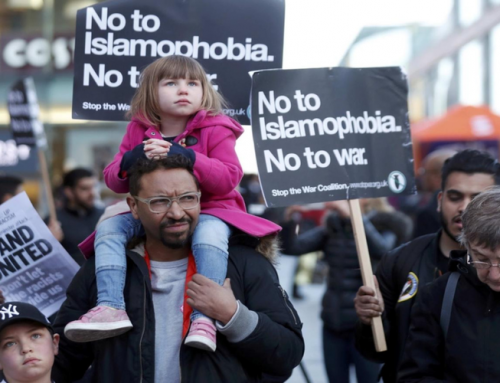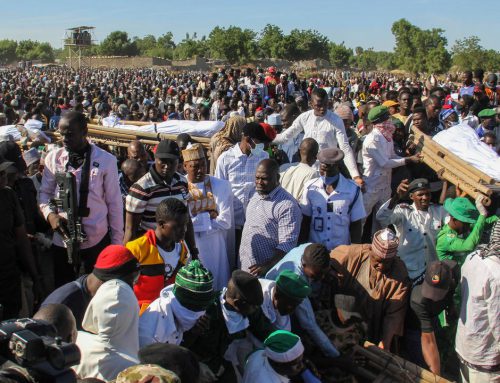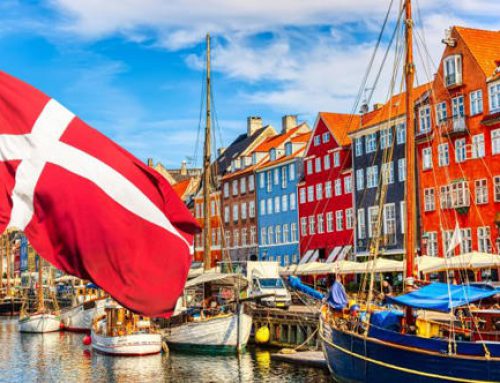As the news of terrorism, terrorist operations take the lead in news and daily events in the post-September-eleven-world; the polarization scale has increased and with it has intensified the attempts to accuse religions, especially Islam, of standing behind these acts, by claiming that what is happening these days is because of the teachings of religions and holy books. Of course, this polarization process is part of a plan to exclude religion and its spiritual and participatory dimensions and its role in realizing the meaning of humanity of humans, regardless of the nature of religion and the extent of its popularity. However, we cannot deny that religion as a phenomenon and a human concept has caused in a way or another many human tragedies, but in all cases in history, the human understanding of religion was responsible for these tragedies, and not the texts of religion and its teachings. In most cases, politics was the hidden hand that used religion as a cover to justify the greed of decision and policy makers. The same thing is still happening today, where political, sectarian and ethnic violence gets inspiration from religions to justify the existence of religious revolutionary rhetoric, which could easily mobilize public opinions and gain support from the public by exploiting the power of religion to influence the masses. What has happened and still happening is that the revolutionary movements, whether political, ethnic or sectarian, get inspired by people’s beliefs and adopt their own issues in order to secure for themselves the needed popularity among the public to serve their political goals. These movements target their opponents because of their political positions or ethnic backgrounds and not because of their religious beliefs. This means that religion is brought to justify the brutality of these movements’ battles with their political and ethnic opponents. Religion is still employed in our contemporary world by the followers of all religions. Al-Qaeda used and was inspired by Islam to justify the political agenda of the organization, which was based on the need to stop the intervention of the other (the West) politically and militarily in the Muslim world; The teachings and historical concepts of Islam were also employed by ISIS to justify its revolution against the political process, and the sectarian and ethnic conflicts that exploded in Iraq after the US invasion. All the two radical and bloody organizations, which are away from the spirit of Islam, did was that they adopted a purely political issues, haunting a large segment of the Muslim societies, and directed all victims of repression, exclusion and marginalization to find solutions to these political issues.
Another model for the human savagery adoption of religion and its use in political and religious conflicts was inspired by Christianity, in which Jesus Christ came with a message of love, while his followers committed the most heinous massacres in Europe after the World War II. When the Serbs failed to control Croatia after the dissolution of Yugoslavia, they planned, aided by the Bosnian Serbs, to take over Bosnia. They formed groups and paramilitary units, which embarked on the implementation of ethnic cleansing and systematic murder against Muslims and Croats, aiming at taking over the largest geographic area for the new state that was emerging on the ruins of ailing Yugoslavia. These units, which were purely serving the political and ethnic goals of Serbia (Greater Serbia), were given names such as ‘White Eagles’, ‘Yellow Wasps’, and ‘Scorpions group’ which was the most infamous at all. The leadership of these groups, active in Croatia, Bosnia and Kosovo between 1991 and 1999, was under Slobodan Medic. Their political logic was that the Greater Serbia should not include Muslims, whom they viewed as the remains of their historical enemy, the Ottoman Empire. They believed that Croats should not be part of this state because they were not part of the Serbian ethnicity and because they were Catholics. This ethnic and political motivation was enough for them to commit a series of horrific crimes that are not very different from crimes committed today; rather they were even more brutal. But that time these crimes were committed under the name of Christianity. The criminals insisted every time they committed a massacre that the victims ought to be killed by a knife both vertically and horizontally, to draw a cross on their bodies. They also would cut two fingers from each hand and left three, to demonstrate the Christian Trinity faith. The list of the crimes of this group includes the burning safe villages, after the killing of all men and leaving a unique blood-soaked signature on the bodies of the dead, and the brutal rape of women, allegedly for the production of ‘pure’ Serbian offspring. The massacre of Srebrenica in July 1995 was only one in series carried out by this group among others.
Brutal humanism, political and ethnic conflicts are repeated, but this time they were carried out under the cover of another faith, which had long been known as the faith of spirituality and human harmony of man and nature: Buddhism. In this faith, Buddha preached the philosophy of harmony and eternal serenity. The Buddhist faith and temples in Burma were used in a new ethnic terror campaign, lead by the spiritual leader of the “969” extremist movement and the chairman of Ma Ba Tha movement, Ashin Wirathu, dubbed by Time Magazine as ‘The Bin Laden of Buddhism’. The American Magazine and published a lengthy report about him and his organization on 20 June 2013 entitled ‘the face of Buddhist terrorism’ detailing his racially-motivated crimes and acts against the Muslim minority in Burma, who had been plagued by this Buddhist terrorism since the occupation of Konbaung Dynasty of the Muslim region of Arakan in 1784, annexing it to the Buddhist state of Burma, up to the British occupation of Burma in 1824, which prompted Buddhists to persecute the Muslims to serve their political purposes, and most recently the takeover of the Communist Burmese army of rule in Burma in 1962 and committing massacres against the Rohingya Muslims, in despite of their support for the revolution since its early days. The Times’ report pointed to the religious mobilization at Buddhist temples to inflame hatred of Rohingya Muslims and to incite racism by adopting a discourse full of incitement against violence against ethnic Muslim residents, who are different from the rest of the Buddhist population.
These campaigns and others led to the June 2012 in which groups of Buddhists attacked Muslim towns and villages in Rakhine State, displacing nearly 22,000 people. Since June 2012, the number of IDPs has been estimated at 125,000, which was classified as acts of ethnic cleansing by many international organizations, describing this Buddhist movement as ‘Burma’s fastest-growing neo-Nazi movement’. The same is true of the Sri Lankan Muslims, who suffer from the terror of a Sinhalese Buddhist movement called the BBS (the Power of Buddhism), which is considered the Muslim population in Sri Lanka as an ethnic threat, and called upon its followers to terrorize and harass Muslims. The movement stood behind the 2014 events, which targeted Muslim-populated villages. The movement is a branch of an extreme ethnic religious organization, known as the Jhuca Hella Urumaya (JHU), which was responsible for the 2013 events that targeted Muslims on a large scale.
Based on these three models (Muslim, Christian and Buddhist), I stress the point that I have raised at the beginning of this article again. Violence and terrorism have various political and ethnic causes, but beliefs and religions are not among them. Despite the fact that religions and beliefs have been taken as reference and a solid ground for inspiration by the three models to promote its agenda. Wherever there is a deteriorating economic situation, high unemployment, high rates of murder and theft, and absence of political and social justice (All of these problems result from the absence of correct application of religions), and whenever extremism emerges as a political, economic or even ethnic reaction, galvanized by religion, the murderers race against time to show brutality, thinking that by doing so, they become closer to God. American researcher William Fisher analyzed this human tendency to invoke religion to justify brutality and justify any counter-policy in his study entitled “War on Terror: All Names Are Equal”. The problem of brutality is mainly related to human behavior and defense, not to religion. Religion is merely a pretext for committing crime, not a cause. As long as the distinction between religion and its human dimension is not clear among these groups in particular and among all people in general, the problem will remain unresolved. Terrorism will continue to insist on sticking to religion, even though terrorism has no religion.
*Dr.Tarik Ladjal is Professor of History at Effat University in Jeddah, Saudi Arabia





